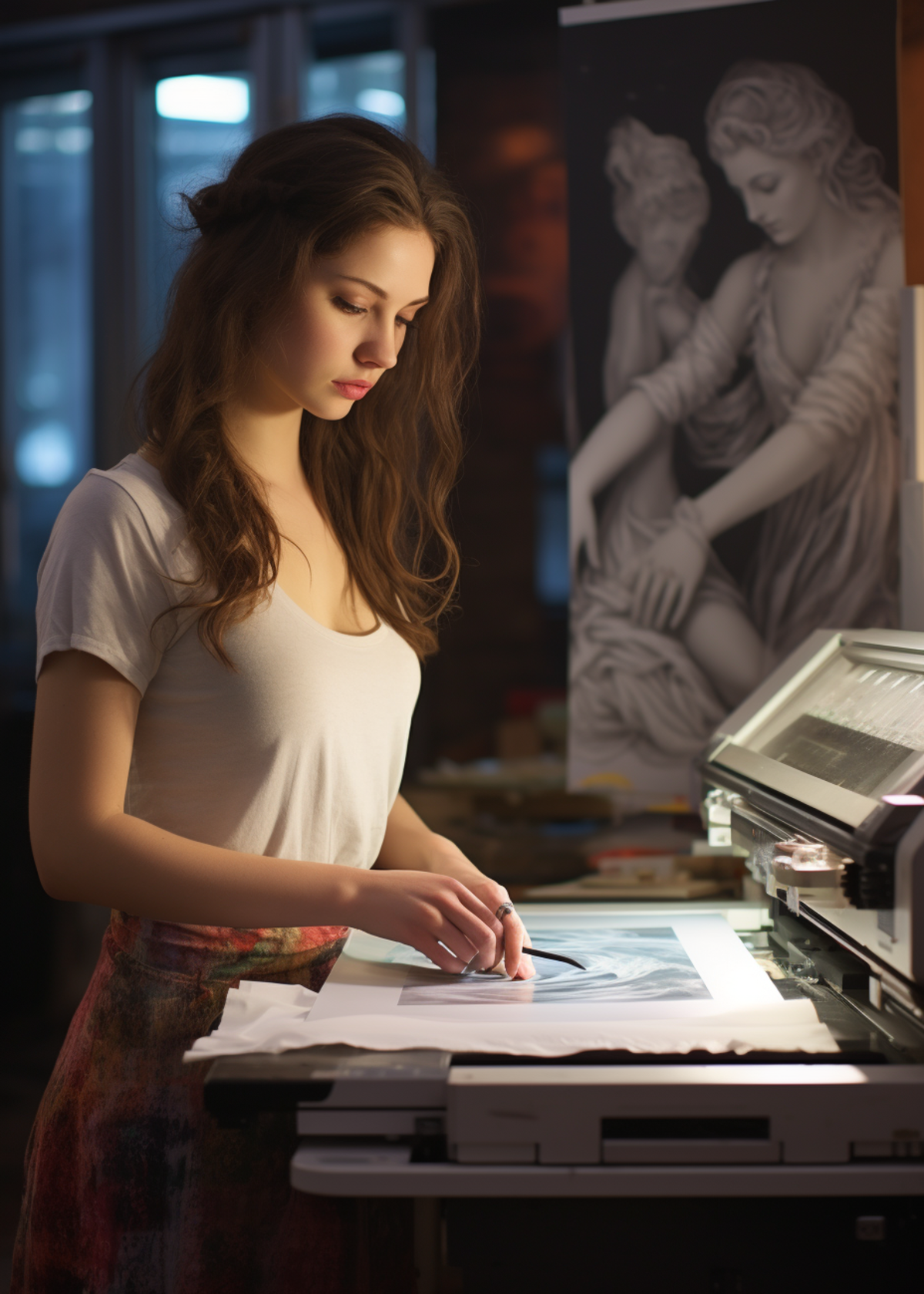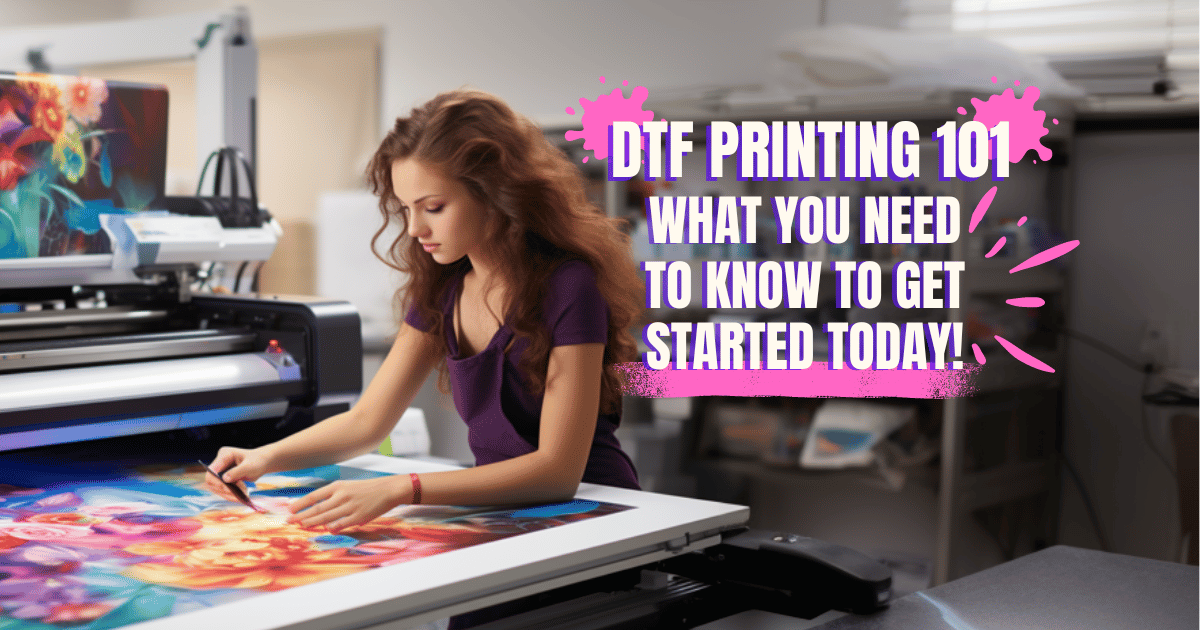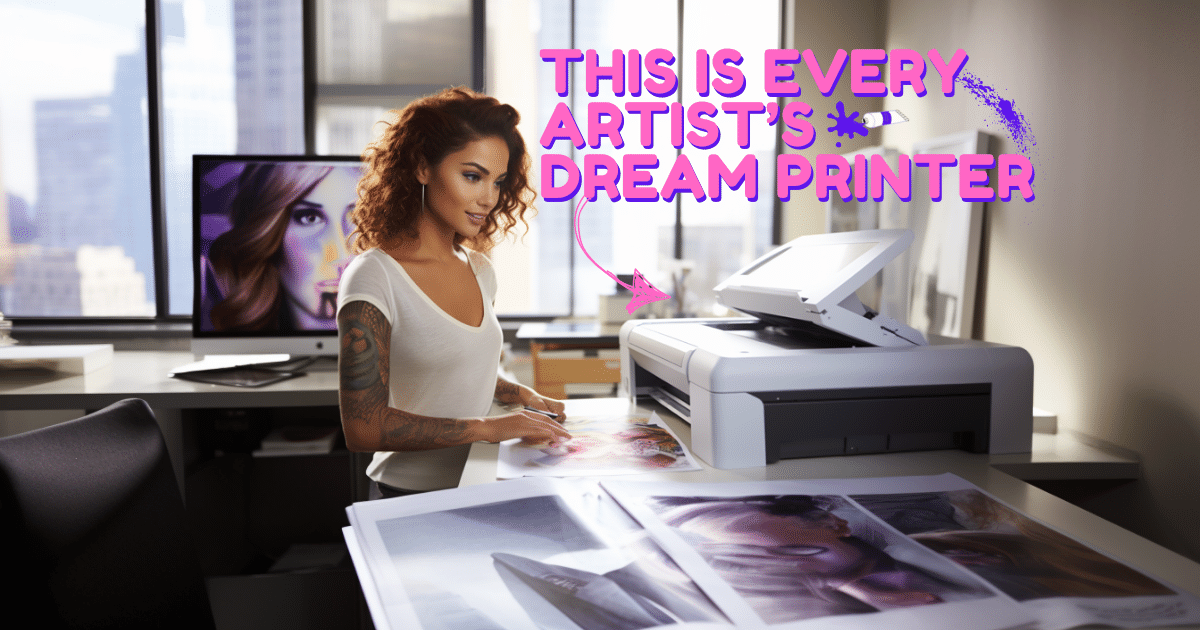How to Choose the Right DTF Printer In 5 Minutes Or Less! 🎨

DTF or Direct-to-Film printing is a type of digital garment printing that has gained popularity among businesses printing custom garments and apparel. Choosing the right DTF printer for your needs can be complicated with so many models and options on the market. This guide will walk you through the key factors to consider when selecting a DTF transfer printer that meets your specific business objectives.
You'll learn how to identify your printing requirements, compare different printer technologies and features, consider budget constraints, evaluate specifications that impact productivity and efficiency, read customer reviews for real-world insights, validate software compatibility, and examine warranties and post-purchase support. So, let's begin;
The Benefits of Using a DTF Transfer Printer
DTF (Direct Film) printing has gained significant popularity in the garment printing industry due to its versatility and high-quality results. The process involves printing designs directly onto a special film, which is then transferred onto the fabric using heat and pressure. As a result, DTF printing offers several advantages over other printing methods.
Firstly, DTF transfer printers produce vibrant and detailed prints with excellent color reproduction. This allows for intricate designs and gradients to be accurately replicated, delivering exceptional image quality to the end product. Moreover, the final prints have a soft feel and are flexible, providing a comfortable and durable garment.
Secondly, DTF printing allows for printing on a wide range of materials, including cotton, polyester, and even leather and denim. This versatility opens up numerous opportunities for customization, making it an ideal choice for businesses looking to cater to various customer demands. Additionally, DTF offers the option for multi-color prints, enabling designs with intricate details to be reproduced accurately.
Various Types of DTF Transfer Printers
When looking to invest in a DTF transfer printer, it is essential to consider the different types available on the market. Each printer has its own set of features and capabilities, catering to specific printing needs. Here are a few common types of DTF transfer printers you should be familiar with:
a) Single Platen DTF Printers: These printers are suitable for small to medium-sized businesses. They typically have a single platen for printing one garment at a time, making them ideal for custom orders or limited production runs.
b) Dual Platen DTF Printers: Dual Platen DTF printers feature two platens, allowing for simultaneous printing on two garments. This not only increases efficiency but also enables businesses to handle larger order volumes.
c) Industrial DTF Printers: Industrial-grade DTF printers are designed for high-volume production and continuous use. They often have multiple platens and advanced features like automatic film feeding and superior print speed. Industrial printers are best suited for large-scale garment manufacturing companies.
➦ Factors to Consider the Right DTF Printer
Choosing the right Direct-to-Film (DTF) printer for your business can be a complex process, but it's crucial to ensure you're investing in a machine that will meet your specific needs and deliver high-quality results. Here are some key factors to consider:
➪ Understanding DTF Printer Basics & Technology:
you start shopping, it's important to understand how DTF printers work. These printers use a unique process to print high-resolution images directly onto transfer film, which is then applied to the desired material. Key components include an inkjet printhead, powder feeder, heating element, and a control panel. Familiarize yourself with these components and how they contribute to the overall printing process.
➪ Your Printing Needs:
Consider the type of prints you'll be producing and the materials you'll be using. DTF printers can print on a wide range of surfaces, including cotton, polyester, and even leather. However, the type of material can affect the print quality and durability, so it's important to choose a printer that's suitable for your specific needs.
➪ Printer Features:
Different DTF printer models come with different features. Some important ones to consider include print speed, resolution, and white ink circulation. The number of printheads can impact the print speed and resolution, while a good white ink circulation system ensures smooth ink flow for high-quality designs. Also, consider the printer's compatibility with different types of ink, as this can affect the vibrancy and durability of your prints.
➪ Price & Warranty:
While it might be tempting to go for the cheapest option, remember that you often get what you pay for. Consider the quality of the printer and the warranty that comes with it. A reliable warranty can give you peace of mind, knowing that you're covered if something goes wrong.
➪ Print Quality & Software:
The quality of the printheads and the software included with the printer can significantly impact the print quality. High-quality printheads are crucial for creating sharp, vibrant prints. The right software, such as a good RIP (Raster Image Processor) software, can give you more control over the printing process and ensure accurate color representation.
➪ Comparing Different Models
Examine printers from various manufacturers to see the differences in specs like print speed, color capability, resolution, paper handling, and software compatibility. Look for printers that offer the features and performance level you require.
Study the technical specs and marketing materials for each printer model under consideration. Look beyond basic specifications to see real-world benefits like uptime, ease of use, versatility, and total cost of ownership.
➪ Third-Party Reviews & User Ratings:
Before making a purchase, it's always a good idea to read reviews from other users. This can give you a sense of the printer's performance and reliability, as well as the quality of customer service provided by the manufacturer.
➪ Brand Reputation:
Lastly, consider the reputation of the brand. Brands with a strong reputation in the industry are more likely to provide high-quality products and excellent customer service.
Remember, the right DTF printer for your business will depend on your specific needs and budget. Take the time to do your research and consider all these factors before making a decision.
Final Thoughts - Wasn't That Quick & Easy?
Choosing the right DTF transfer printer is crucial for achieving high-quality and consistent results in garment printing. Understanding the benefits of DTF printing, such as vibrant prints and versatility, can help you determine if it is the right printing method for your business. By familiarizing yourself with the various types of DTF transfer printers and considering their features and compatibility with DTF inks, you can make an informed decision to enhance your garment printing capabilities. Ensure to evaluate your specific production requirements and budget constraints to find the perfect DTF transfer printer that aligns with your business goals.
Learn More About DTF Printing ⬇








